Annual Pollution Prevention Industry Survey
Summary of Critical Takeaways from the Annual Industry Survey
The Tennessee Department of Environment and Conservation (TDEC) receives annual funding through an Environmental Protection Agency Pollution Prevention (P2) Grant. The P2 grant is utilized for on-site technical assistance, workshops, roundtables, and support to Tennessee manufacturers and government entities to achieve measurable results in pollution prevention, while also reducing costs and focusing on climate change as it relates to greenhouse gas reduction in all manufacturing sectors.
One of the many tools we use to engage Tennessee manufacturers is our Annual Pollution Prevention Industry Survey.
Our survey is intended to assist Tennessee’s industry leaders in making informed decisions about waste management, recycling, water usage, and energy consumption. These smart choices can give organizations competitive advantages. Survey data enables the Office of Sustainable Practices to offer substantive programs, technical assistance and business networking that specifically address issues identified as impacting Tennessee’s industry.
The Office of Sustainable Practices would like to thank everyone that participated in our industry survey. Each year we strive to have individuals respond throughout the state with an excellent distribution across multiple types of industries and facility sizes.
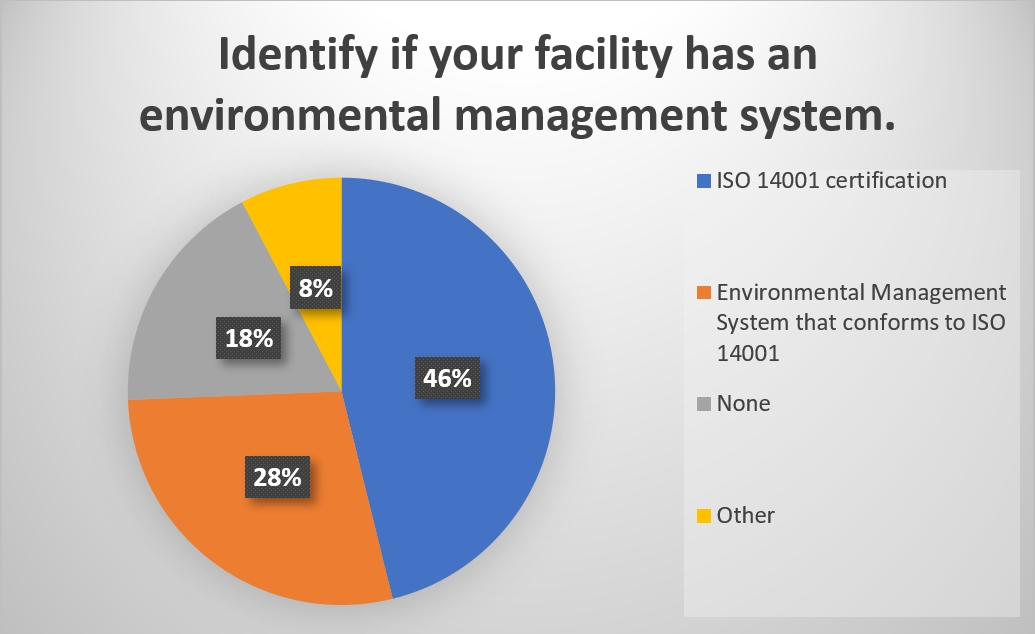
Nearly fifty (50%) percent of respondents have an ISO 14001 certified Environmental Management System (EMS), and twenty-eight (28%) percent of facilities have an EMS that conforms to the ISO standards but are not certified. Eight (8%) percent of respondents have unique in-house EMS programs that are developed by their respective companies. Twenty (20%) percent of facilities had no EMS
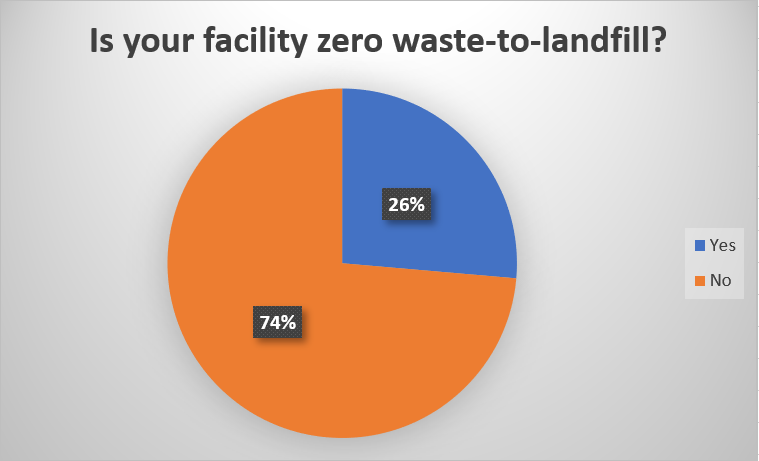
Twenty-six (26%) percent of respondents are designated or self-designated as a Zero Waste to Landfill (ZWTL) facility. ZWTL still has no official or common definition, but it is generally accepted to be at least 95% of discards being reused, recycled, or otherwise not landfilled. Seventy-four (74%) percent of facilities responding to the survey are not ZWTL. Common obstacles to this goal vary widely but usually are vendor capabilities, lack of monetary commitment and/or issues with materials substitutions. Most often mentioned is that certain non-recyclable products are necessary, and any substitutions may compromise the quality of products.
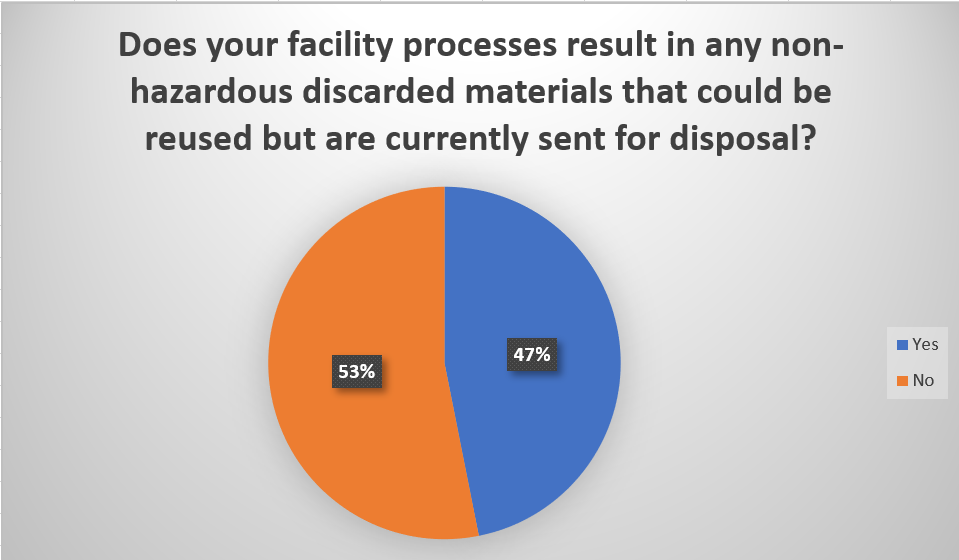
Forty-seven (47%) percent of respondents have non-hazardous byproducts that could have other uses. Impediments to this are a lack of recycling vendors and prohibitive costs for processing and transportation.
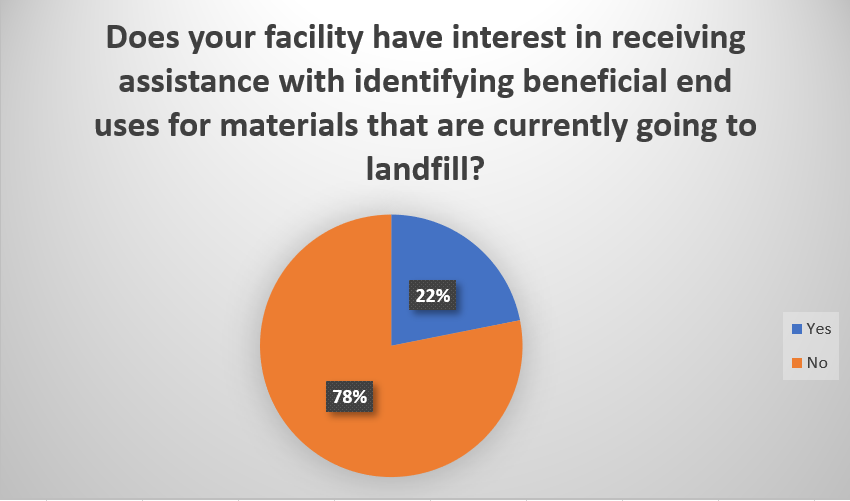
Twenty-two (22%) percent would like assistance with finding a beneficial end-use of materials discards. Lack of partners, low quantities, and materials unique to processes are the major challenges. OSP will be in direct contact with each of these respondents to offer further assistance.
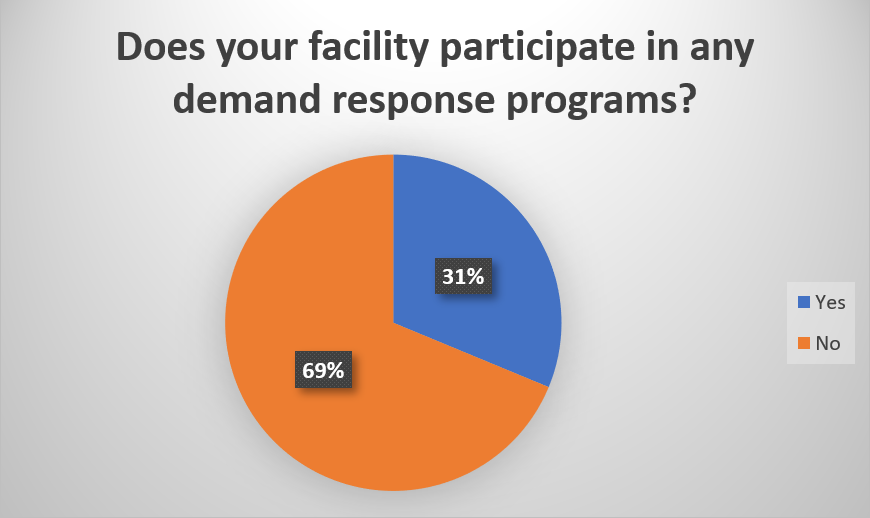
Thirty-one (31%) percent of responding facilities participate in demand response programs for energy use curtailment and management during peak times.
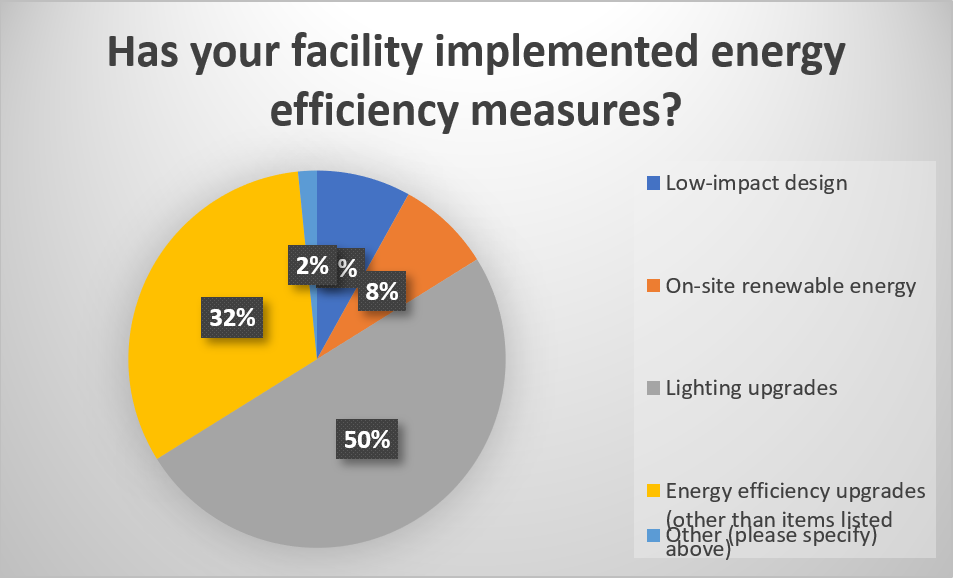
The most popular energy reduction project was lighting upgrades with ninety-six (96%) percent of facilities indicating that they have upgraded. Sixty-four (64%) percent implemented other practices or installed more efficient equipment other than lighting.
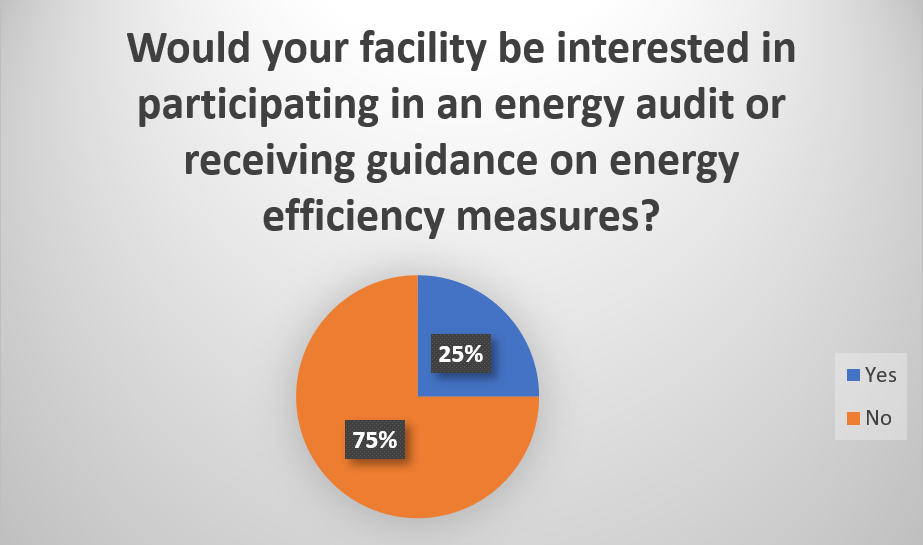
Tennessee 3 Star Industrial Assessment Center offers in-depth energy assessments at no cost to qualifying Tennessee industries. OSP will refer the twenty-five (25%) percent of our survey respondents expressing interest to the TTU-IAC program participating universities for potential assessments.
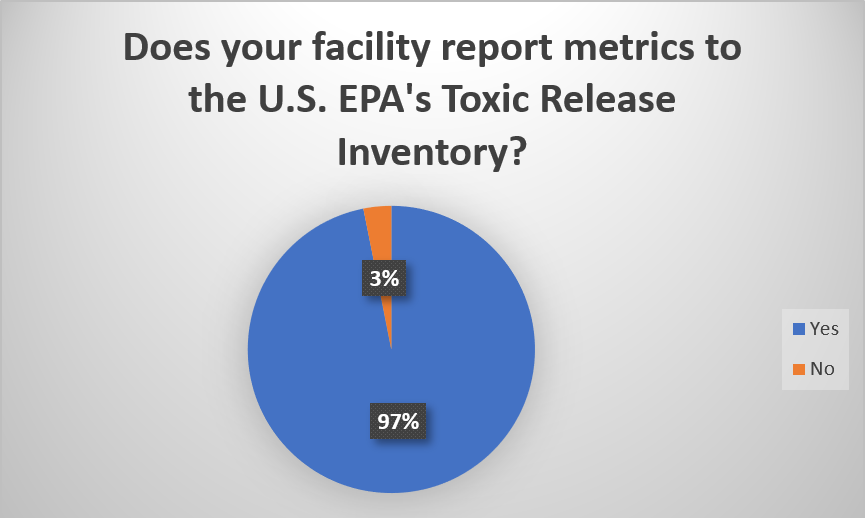
Over ninety-seven (97%) percent of survey respondents report toxic releases to the US Environmental Protection Agency.
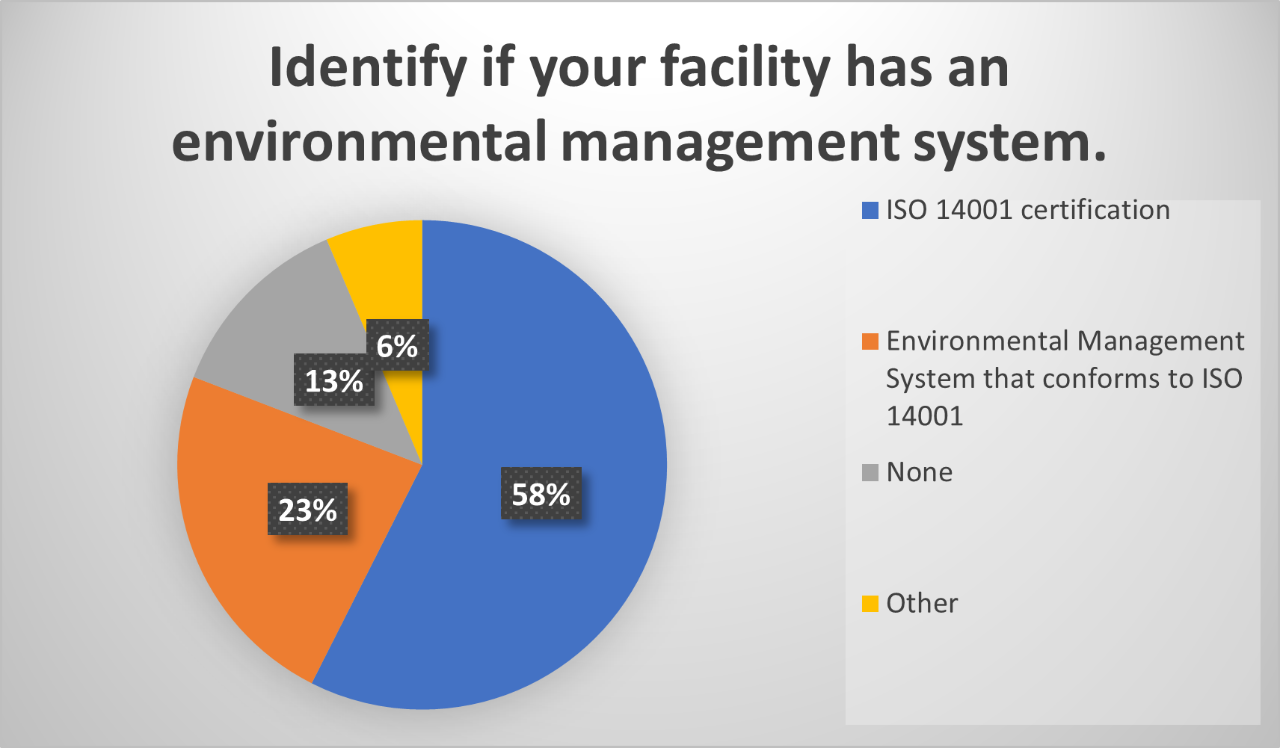
Fifty-seven (57%) percent of respondents have an ISO 14001 certified Environmental Management System (EMS), and twenty-three (23%) percent of facilities have an EMS that conforms to the ISO standards but are not certified. Six (6%) percent of respondents have unique in-house EMS programs that are developed by their respective companies. Thirteen (13%) percent of facilities had no EMS.
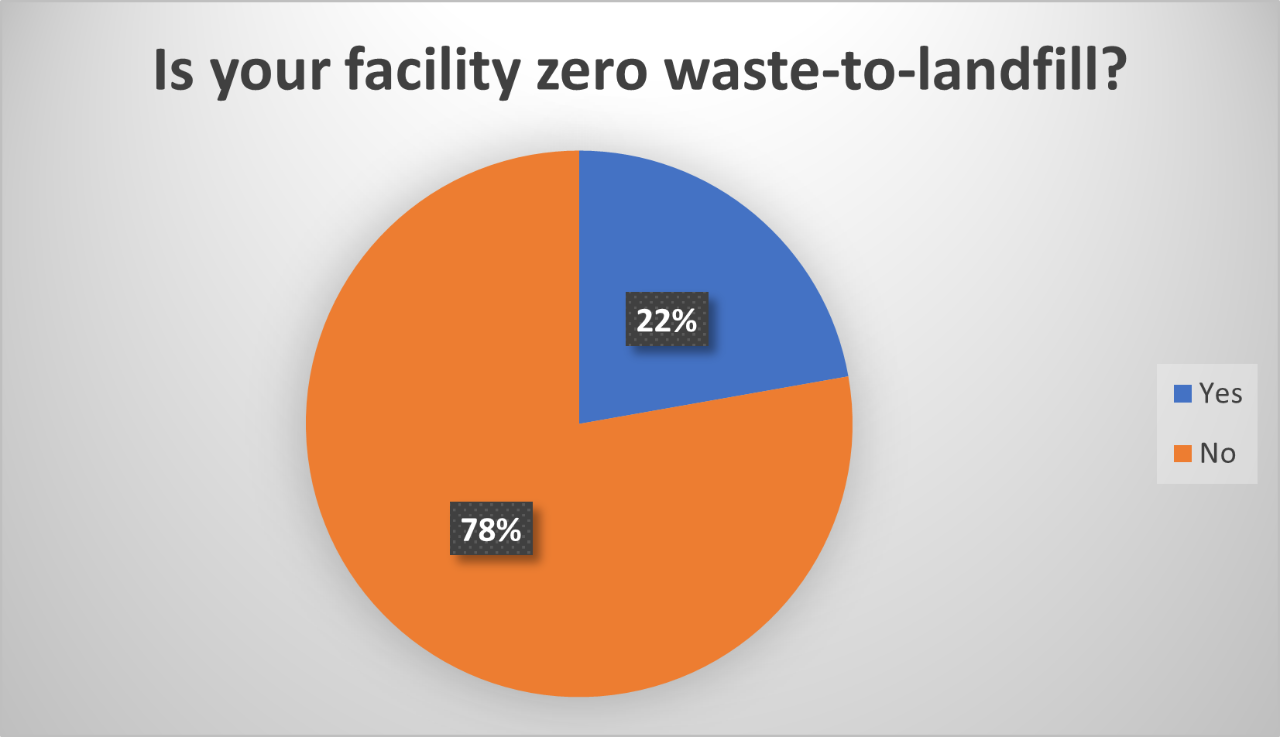
Twenty-two (22%) percent of respondents are designated or self-designated as a Zero Waste to Landfill (ZWTL) facility.ZWTL still has no official or common definition, but it is generally accepted to be at least 95% of discards being reused, recycled, or otherwise not landfilled. Seventy-eight (78%) percent of facilities responding to the survey are not ZWTL. Common obstacles to this goal vary widely but usually are vendor capabilities, lack of monetary commitment and/or issues with materials substitutions. Most often mentioned is that certain non-recyclable products are necessary, and any substitutions may compromise the quality of products.
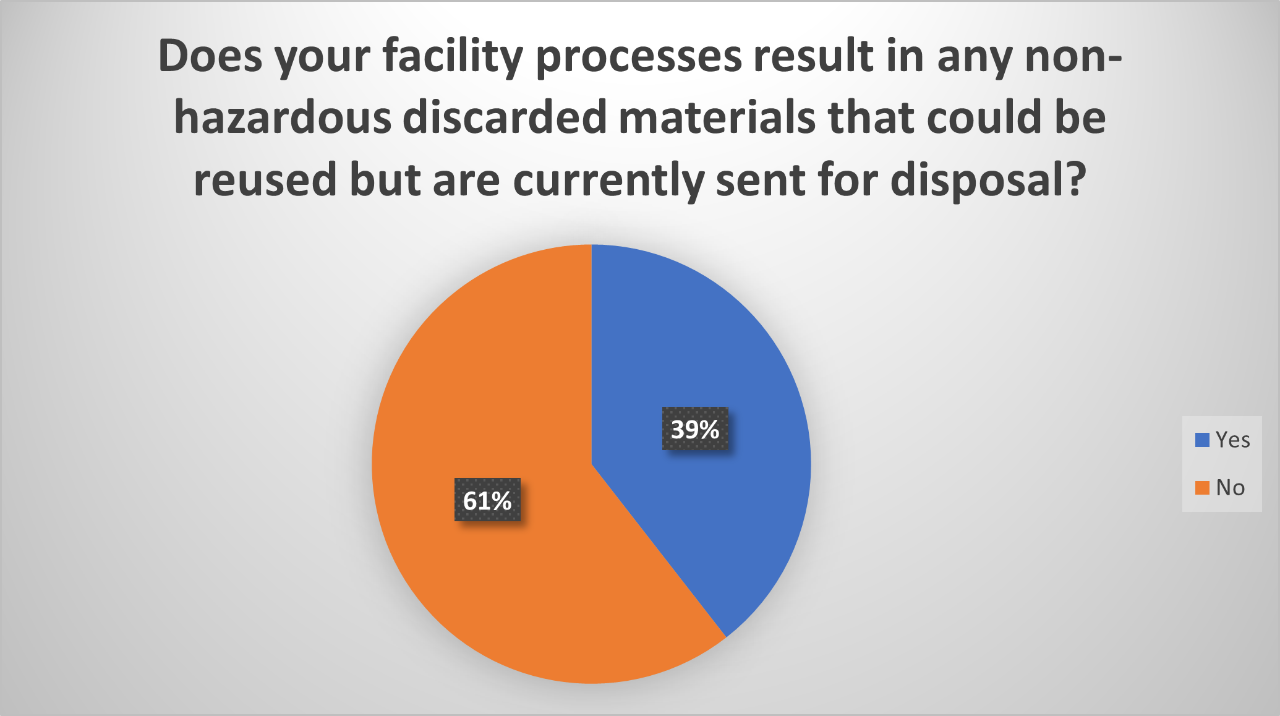
Forty (40%) percent of respondents have non-hazardous byproducts that could have other uses. Impediments to this are a lack of recycling vendors and prohibitive costs for processing and transportation.
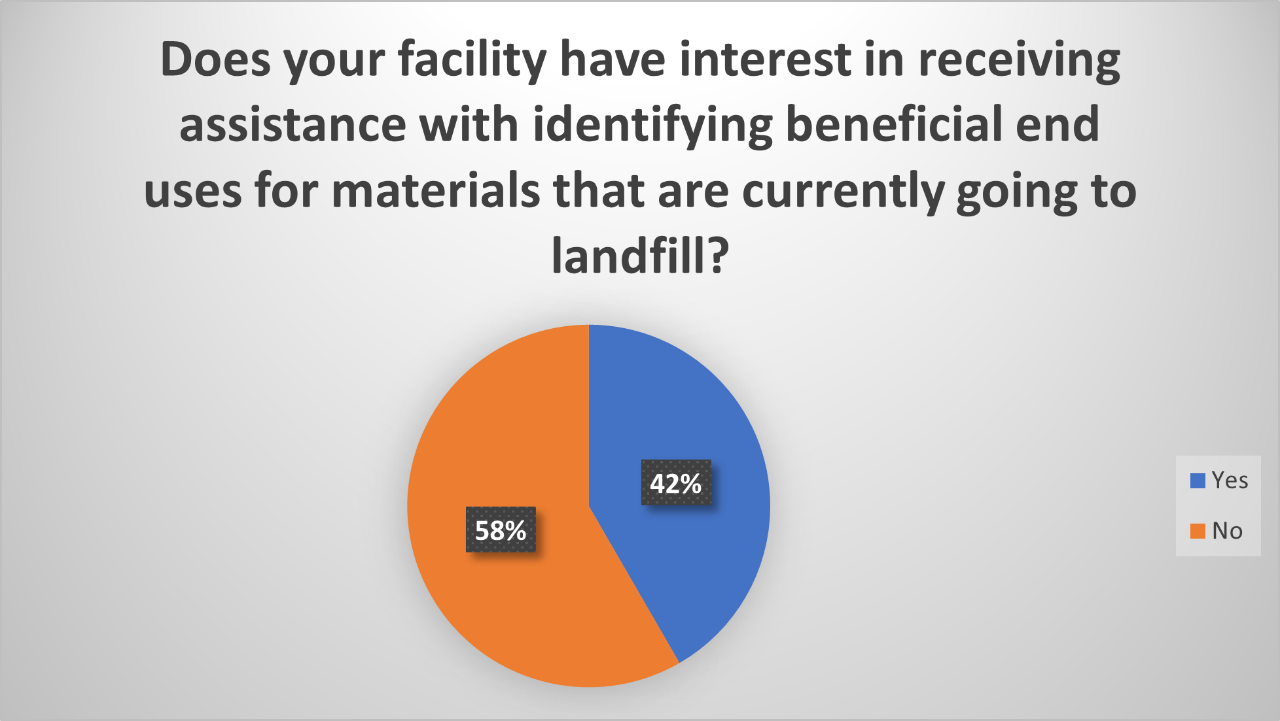
Forty-two (42%) percent would like assistance with finding a beneficial end-use of materials discards. Lack of partners, low quantities, and materials unique to processes are the major challenges. OSP will be in direct contact with each of these respondents to offer further assistance.
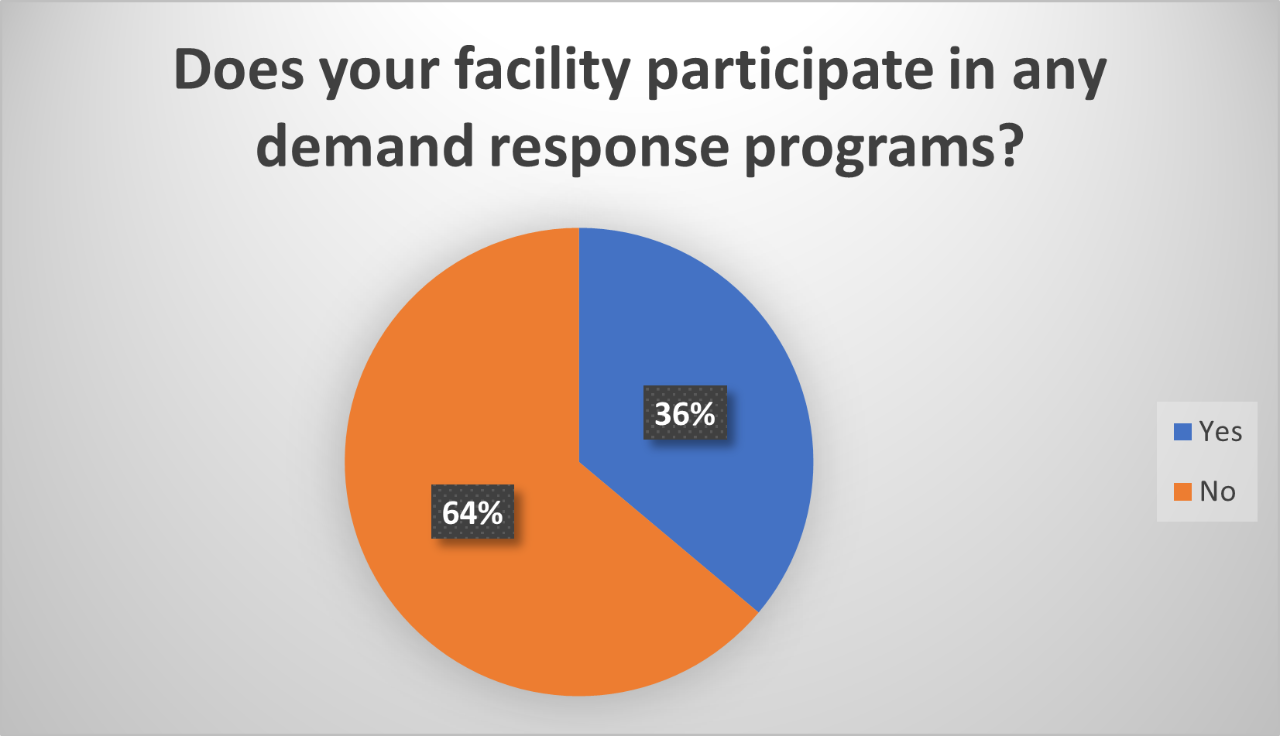
Thirty-six (36%) percent of responding facilities participate in demand response programs for energy use curtailment and management during peak times.
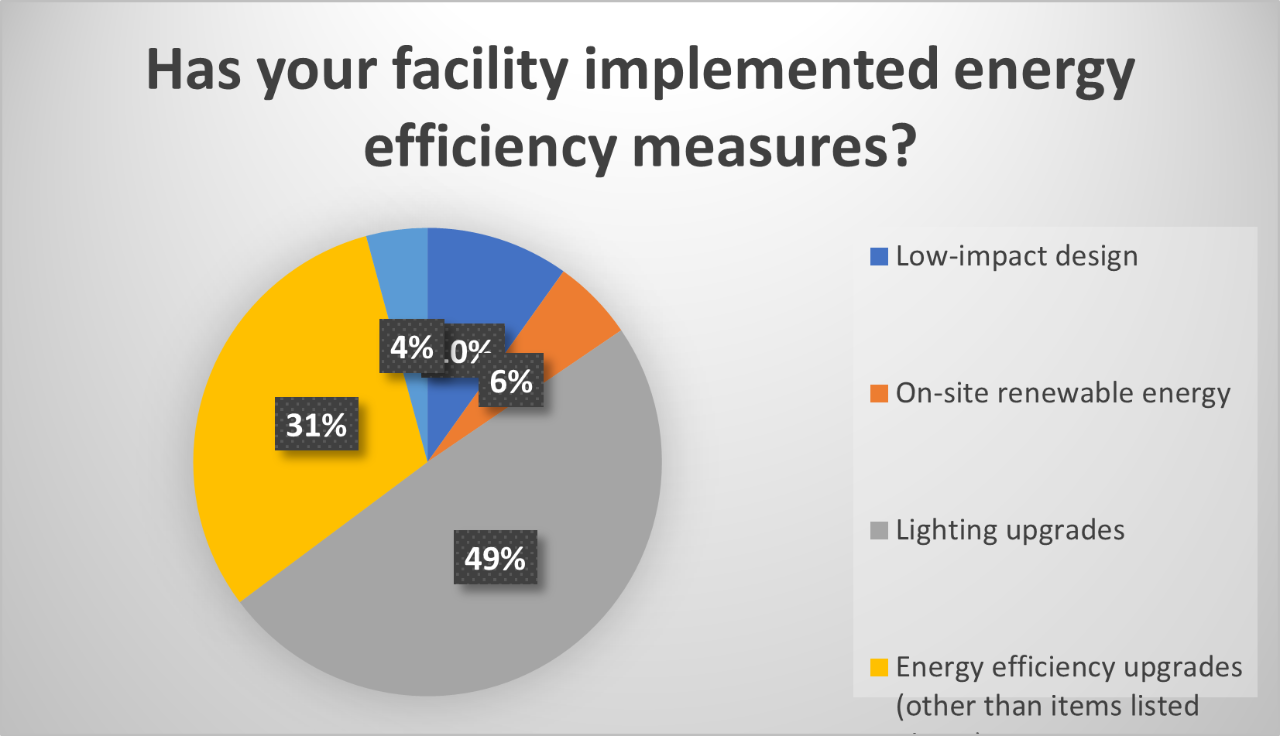
The most popular energy reduction project was lighting upgrades with ninety-seven (97%) percent of facilities indicating that they have upgraded. Sixty-one (61%) percent implemented other practices or installed more efficient equipment other than lighting.
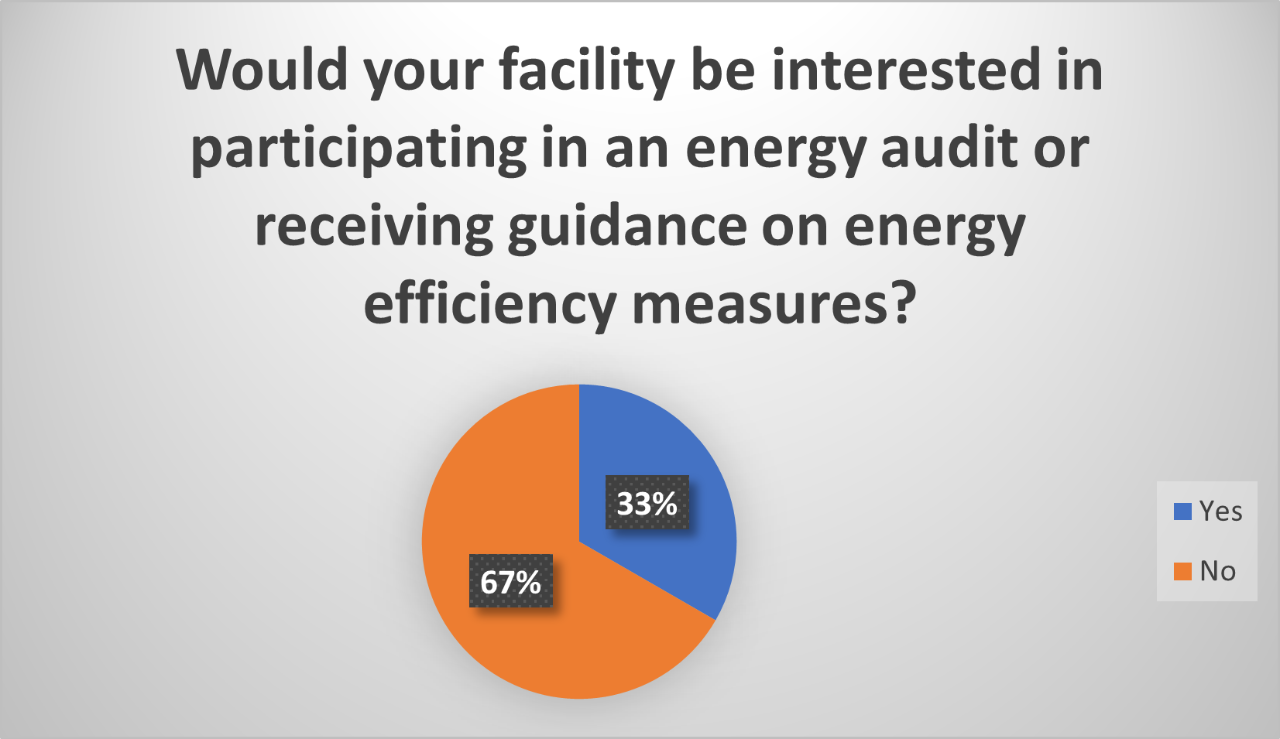
The Tennessee 3 Star Industrial Assessment Center offers in-depth energy assessments at no cost to qualifying Tennessee industries. OSP will refer the thirty-three (33%) percent of our survey respondents expressing interest to the TTU-IAC program participating universities for potential assessments.
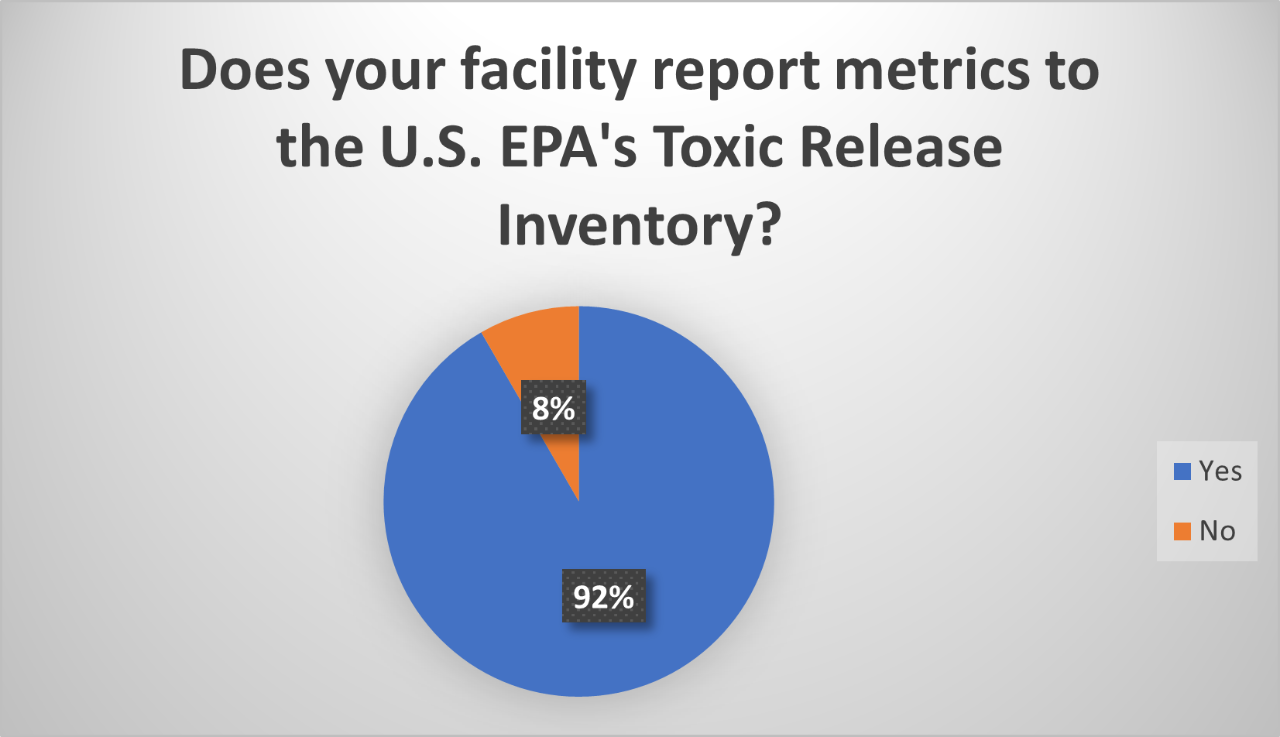
Over ninety-two (92%) percent of survey respondents report toxic releases to the US Environmental Protection Agency.
Contacts
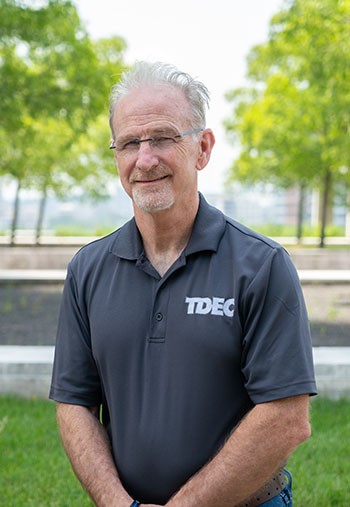
Vaughn Cassidy
Environmental Consultant
Office of Sustainable Practices
731-431-7856
vaughn.cassidy@tn.gov

Kathy Glapa
Program Manager
Office of Sustainable Practices
615-795-3539
kathy.glapa@tn.gov
This Page Last Updated: April 25, 2024 at 3:09 PM